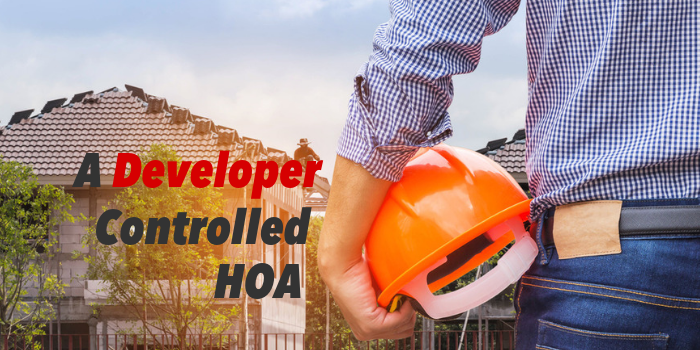An HOA is created before the ground is broken for the first home. The developer-controlled board is more or less just in charge of keeping the community afloat until the community is finished (or mostly finished). In theory they have all of the same responsibilities that an owner-controlled board has, however, in practice, the board has very little accountability.
It is common for developers’ employees to make up the board pre-transition. Developers don’t have to hold regular meetings, usually only one per year, but owners must be notified and can be in attendance unless the information is classified. Minutes should be kept, but often they are not.
The Roles of Developers in the HOA
While the developer is in control of the HOA board, they generally get weighted votes, meaning they get more votes per lot than each homeowner. Owners usually have no meaningful input about community decisions, including budget issues, during this time. Sometimes when the board is developer controlled, they oversee the community without much involvement from homeowners, and other times, the board takes a more active role and includes homeowners. Developers tend to have varying range of involvement on the board, sometimes including homeowners on the board as soon as it makes sense (even when it’s not required), while others choose to not involve homeowners because it inevitably takes more work to involve them.
As long as the developer makes sound financial decisions there won’t be any negative repercussions for homeowners. However, occasionally developers set operating expenditures budget artificially low, set assessments on new homes too low, and neglect common areas, all of which can come back to negatively impact the homeowners once control is turned over. Technically the HOA Board, whether controlled by the developer or elected members of the community, owes the same fiduciary duty to the homeowners. If that duty has been ignored or grossly neglected, owners should be prepared to take legal action against the developer once the community has been turned over.
Phasing Out the Developer
Pretransition, developers have pretty much full control over communities, but there are several steps that homeowners can take to make sure they are in the know of how the community is being run. Following these steps and having owner involvement will ensure that transition will go more smoothly.
- Get you know your governing documents, financials, and meeting minutes (when available). Consult your by-laws as there should be information there that addresses the board of directors – how it is elected, who can serve on the board, and how long the board term will last.
- Utilize your community’s management company, if you have one. If you do not have, consider hiring one. A management company will come in especially handy during the transition phase.
- Form a residential advisory committee. Although it cannot override any decisions made by the governing board, it serves to ensure that residents know that their voices are being heard.
The developer can be in control for a very long time. The larger the subdivision, the longer the developer will be in control. Transition varies state to state, but generally occurs at some point shortly after 90 percent of all units are turned over. At that point, the community will generally have an election to put homeowners on the board – sometimes homeowners will take over a couple of seats while leaving developer appointed representatives in some seats in order to slowly phase the developer out, while other times homeowners will take over all seats at once.







